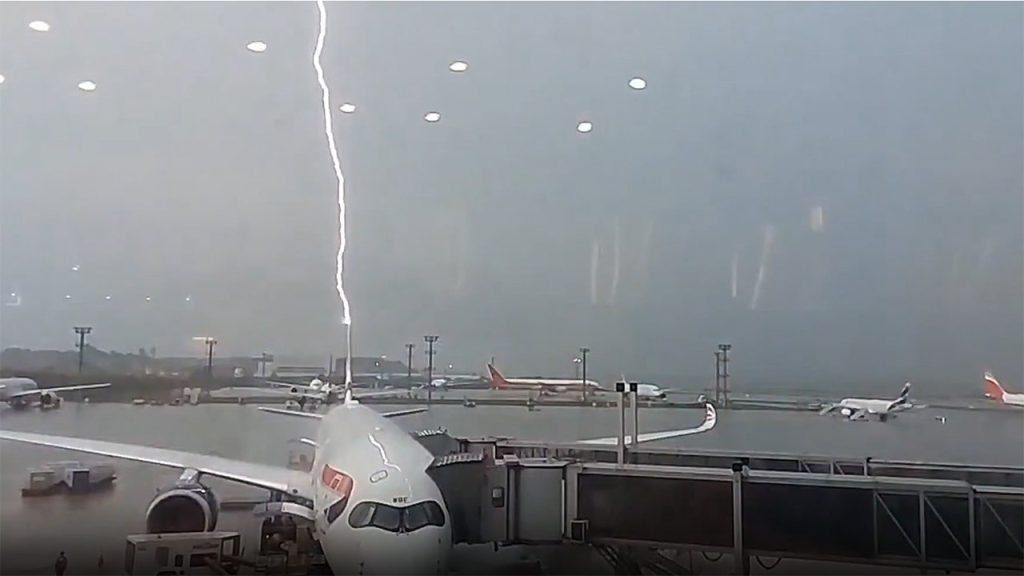Incident Overview
On a rainy Friday at São Paulo/Guarulhos International Airport (GRU) in Brazil, a dramatic incident unfolded as a British Airways aircraft parked at the gate was struck by lightning. The electrifying moment was captured on video by Bernhard Warr, a passenger awaiting boarding, and subsequently shared on social media platform X (formerly Twitter). The footage, seemingly modified to highlight the event in slow motion, shows the brilliant flash of the lightning bolt striking the tail of the aircraft while a ground crew member casually approaches the rear of the plane. This unexpected event caused a delay for passengers, including Warr, who documented his experience online.
Passenger Perspective and Concerns
Warr’s initial post expressed uncertainty about the situation, questioning the necessary checks the aircraft would undergo following the lightning strike. This understandable concern reflects the general public’s limited knowledge about aircraft safety procedures and the resilience of modern planes to such events. His subsequent post confirmed his safe arrival in London, indicating that the aircraft was cleared for flight after the necessary inspections and repairs.
Aircraft Lightning Protection Systems
Modern aircraft are designed with robust lightning protection systems to mitigate the potential impact of lightning strikes, which are relatively common occurrences in aviation. These systems typically involve strategically placed static dischargers, also known as static wicks, and conductive pathways throughout the aircraft’s skin. The purpose of these systems is to safely channel the immense electrical current from a lightning strike away from critical components and sensitive electronics, preventing damage and ensuring the aircraft’s continued airworthiness.
Typical Post-Lightning Strike Procedures
Following a lightning strike, airlines adhere to strict safety protocols to assess the aircraft for any potential damage. These procedures involve thorough inspections of the aircraft’s exterior, particularly the area of the strike, to identify any visible signs of damage, such as burn marks or structural deformities. Additionally, internal inspections of the aircraft’s electrical systems and avionics are conducted to ensure that all systems are functioning correctly and that no critical components have been affected by the electrical surge. These inspections may involve specialized testing equipment and may require the expertise of maintenance technicians.
The Impact of Lightning Strikes on Aircraft
While lightning strikes can be visually dramatic, they rarely pose a significant threat to the safety of modern aircraft due to the sophisticated lightning protection systems incorporated in their design. The conductive pathways within the aircraft’s structure effectively divert the electrical current, minimizing the risk of damage. However, a lightning strike can potentially affect sensitive electronic equipment or cause minor structural damage, requiring repairs before the aircraft can return to service. In some cases, the impact of a lightning strike may not be immediately apparent, requiring more detailed inspections and tests to ensure the continued airworthiness of the aircraft.
The Importance of Standardized Safety Protocols
The incident at GRU highlights the importance of standardized safety protocols within the aviation industry. These protocols, developed by regulatory bodies and aircraft manufacturers, ensure that all aircraft are equipped with adequate lightning protection systems and that appropriate procedures are followed after a lightning strike. The rigorous inspections and meticulous assessments conducted by maintenance personnel following such events play a crucial role in maintaining the high safety standards of air travel and ensuring passenger safety. The incident involving the British Airways aircraft serves as a reminder of the inherent challenges of operating in diverse weather conditions and the importance of continuous vigilance in ensuring the safety and reliability of air travel.










